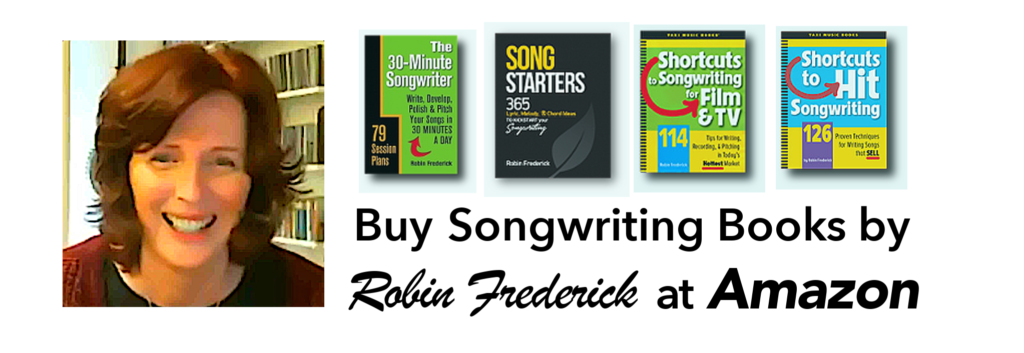Want to sharpen your pitching skills to Film & TV opportunities and get more forwards? Here’s the best exercise I’ve ever found for strengthening your Film & TV songwriting and pitches: Do what a music supervisor does. Find songs that underscore the emotion, energy, or atmosphere in a scene and test them against the picture!
At the end of this post, I’ll give you some resources for contacting music supervisors and pitching your songs. But before you do that, make sure you have what they’re looking for. Don’t burn a contact because you didn’t do your research. If you’ll spend a couple of afternoons following these instructions, I promise your pitches will be closer to the mark and your film and TV songwriting will be stronger.
Watch a scene with a featured song
There are dozens of successful TV series using songs. You can find a list of currently airing shows at www.Tunefind.com. In the summer season, there are usually around 30 shows using songs. In the fall, there will be 60 or more.
Find a scene. Many of these shows feature a song in the opening or closing scene of each episode. A song is featured when there’s little or no dialogue over it and the volume is turned up. You should get familiar with these uses. They offer great exposure for your songs and can result in a few thousand downloads at iTunes! Not to mention the fees and royalties that come in over time – these popular shows run for years in syndication and foreign markets.
Some of the top TV series that regularly feature songs in the opening or closing scenes are: Grey’s Anatomy, Suits, This Is Us, Yellowstone, Riverdale, Lucifer, plus some of your favorite older series available on Netflix and Amazon: Sons of Anarchy, Vampire Diaries, and dozens more.
Watch the scene and listen to the song use. Pick a show and episode you’re interested in then rent or buy it on Amazon. You’re going to watch the scene several times, so you need to have easy access to it. It may take a few tries to find a scene you want to work with.
If you’re interested in songs for TV commercials, you can watch many of them on YouTube. Search that website by typing in the name of the product that featured the song in their commercial followed by the word “song.”
Now, let’s say the director has told you that she doesn’t like the song that’s currently in the scene and wants a different one. You’ll need to find a new song that underscores the mood or energy of the scene and enhances the viewer’s experience.
Replace the song
-> Think of the places where you usually find new music. You can look for related artists suggested by Pandora, Apple Music, or Spotify. Look through their songs. To save time, look at the title before you listen. Does it sound like something that would work for your scene? If not, move on. That’s what a music supervisor would do. Keep that in mind when choosing titles for your songs.
-> Start by looking through songs by similar artists. Choose one or two songs, turn down the volume on the scene, and play your choices. Did they create a mood or energy level that made the scene more effective and memorable? Did the chorus or refrain of the song relate to the emotional situation of the characters? If not, keep looking.
-> Try your own songs. Go ahead and play your own songs under the scene. Would one of these work? Be honest with yourself. Could you write a song that would be more effective? If so, try writing it now, while you’re in the mood and the scene is right in front of you. By the way, these are often the very scenes that use songs with barebones arrangements so keep it simple. Focus on the vocal and the song itself.
To really get the Music Supervisor Experience, find three songs and give yourself a time deadline! Because that’s what supervisors have to do. They must present at least three songs for the director or producer to choose from for a use like this and there’s never enough time to do it in.
To speed up the process for future searches, all successful music supervisors keep lists of the songs they come across that have potential for other uses. In other words, they keep track of songs that may not be right for the scene they’re working on but might work for a different scene. Here’s how they do it…they use PLAYLISTS!
Learn more about playlists for film & TV and how to create your own.
Resources
Shortcuts to Songwriting for Film & TV – This is my book and still the ONLY book on this fast-growing market for songwriters. You’ll find information on how to write songs for Film & TV, make pitches directly to music supervisors, where to find the projects they’re working on, and how to use pitching services like TAXI.com, plus interviews with top music supervisors. Here are a few more resources:
Music Connection Magazine – Each year in the November issue there’s a directory of music supervisors with contact information.
The Film & Television Music Guide – An up-to-date directory with good contact info.
MusicSupervisorGuide.com – Detailed contact information is available to members. Be sure to get familiar with the shows and movies these supervisors work on before pitching.
TAXI’s Industry Listings – TAXI’s listings will give you a good idea what music supervisors and music libraries are currently looking for. You have to join TAXI before you can submit to the opportunities but the listings are available to the public and they’re a great source of information.
Film & TV Songwriting: The Seven Ingredients of Emotion – Check out my course on songwriting for television, movies, and commercials. I’ll walk you through the craft of writing songs for scenes. Plus you’ll get dozens of scenes you can practice on. Write your own song and run it with a scene to experience exactly how it works.
by Robin Frederick


